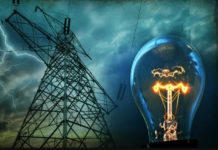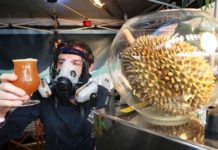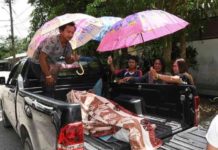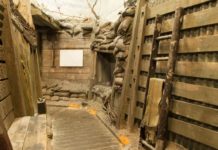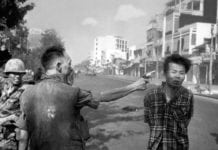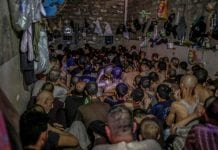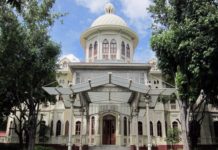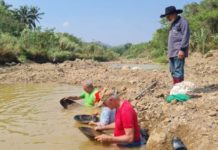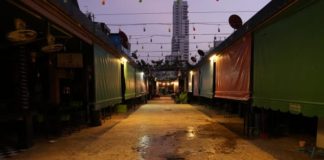
Numerous Thais flock to a section of the Mekong River in northeastern Thailand each year to see fireballs shoot from the water into the sky at dusk allegedly courtesy of a giant mythical serpent living in the river.
It turns out, however, that the fireballs that seemingly rise from the surface of the river aren’t produced by the magical creature. Rather, they are done so by Lao villagers on the opposite bank shooting flares into the sky.
Some Thais have discovered this by taking pictures with drones flown over the river during the Bang Fai Phaya Nark, also known as the Naga Fireballs Festival, at the end of Buddhist Lent in late October, which draws large crowds of reverent worshippers.
According to images and explanations posted on social media by enterprising amateur sleuths, Lao villagers were seen shooting flares from guns into the sky with the apparent aim of deceiving Thais gathered on the opposite bank of the river, which serves as a natural boundary between the two nations.
For generations Thais have believed that a mythical Naga serpent, whose representations adorn every Buddhist temple in the country, inhabits the Mekong and releases magical fireballs occasionally at dusk.
“The fireball event is an unexplained phenomenon that generally takes place on the full moon night of the 11th lunar month, which also coincides with the end of the Buddhist Lent,” says the Thai Folk website.
It is obvious that people shoot flares into the sky from the Lao side, which can be proven by taking wide-angle photos
“The fireballs are smokeless, smell-less and soundless. They rise 20-30 meters straight up to the air then disappear without falling back to the earth as normal fireballs do. Their sizes vary from a thumb-size to an egg-size,” the website explains.
However, skeptical citizens have maintained for years that the fireballs are nothing magical.
“It is obvious that people shoot flares into the sky from the Lao side, which can be proven by taking wide-angle photos,” said Jessada Denduangboripant, a biologist who lectures at Chulalongkorn University in Bangkok and routinely employs scientific methods to debunk popular superstitions.
“People call these flares ‘fake fireballs,’ saying they have seen ‘real fireballs’ with their own eyes, [and] cite old people who claim to have seen the fireballs for many decades. Such claims cannot be regarded as verifiable evidence,” Jessada, who enjoys a large social media following, explained in a post on Facebook on Oct. 27.
The scientist has called on skeptical Thais to continue helping debunk the alleged miracle by taking photos of it so that the images could then be analyzed and used as evidence of the fireballs having manmade origins.
Other skeptical Thais chimed in with their own tongue-in-cheek suggestions.
“Next year they should shoot flares from underwater,” one commenter observed.
Another commenter suggested that the popular festival’s organizers should “switch to a fireworks show” instead of faking magical fireballs.
“Many people don’t care whether the fireballs are real or not. They just want to have fun,” he said.


